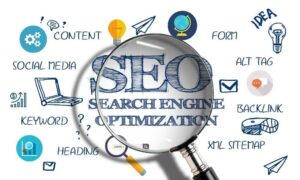
For many businesses, moving to the cloud is no longer an aspirational aim; instead, almost every IT department that wants to satisfy business objectives now uses the cloud as their primary platform of choice, as per cloud consulting services experts. This article discusses contemporary cloud adoption tactics that organizations should consider when using them. Keep reading to learn more!
Your Cloud Adoption Strategy: opting the most excellent Computing and Deployment Models
It’s time to consider the adoption architecture that will assist you in accomplishing that goal the most, according to cloud consulting services experts.
1) The Use of Hybrid Clouds
According to MVP software development experts, most enterprises heavily rely on public cloud platforms and on-premises data centers, making implementing a hybrid cloud approach inevitable. Due to years of technology investment, many company clients often have on-premises data center infrastructures.
These companies’ internal cultures are frequently shaped by the People, Products, and Processes that make up their business. They have been gradually created in collaboration to support the on-premises solutions strategy. Transferring the entire on-premises technological stack to a cloud architect platform is difficult. It requires adapting internal IT processes to the cloud-based environment’s operations, governance, and compliance as per MVP software development experts.
Additionally, upgrading administrative staff to fit the new environment takes a lot of effort. Other times, doing so might even be unreasonable. These businesses may be better suited for the hybrid cloud adoption strategy. It is because the hybrid cloud delivers the most remarkable business advantages for the customers with the lowest risk of transformation per cloud consulting services experts.
2) The Use of Multiple Clouds
Similar to the hybrid cloud, multi-cloud usage has recently become more common, particularly among enterprises, as per MVP software development experts. Utilizing many cloud platforms lets you make use of each one’s unique, best-of-breed technologies. Contrarily, we are reducing the dangers brought on by reliance on a single cloud platform. Although there may be some operational difficulties with the multi-cloud idea, these benefits have pushed toward widespread adoption.
- Each cloud architect platform uses its own proprietary technology to process and store customer data. It restricts the ability of the same data to be transferred between platforms and might even charge a transfer fee, as per cloud consulting services experts.
- A variety of cloud portals are required for users to manage their everyday tasks. Operations for the IT staff may become more challenging as a result.
- The platform’s proprietary applications and compute technology from each cloud security vendor will have an effect on the programmers who use it, as per MVP software development experts. It could result in differences across several development teams working for the same company, as well as issues with operational and technological compatibility.
3) Cloud First Adoption
According to cloud consulting services experts, adopting cloud-based solutions is one of the significant priorities above any other kind, such as on-premises solutions, while using a cloud-first strategy. The cloud-first strategy fosters the development of business solutions or apps. It does not restrict use to just cloud migration. According to MVP software development experts, many businesses have started requiring the cloud-first approach for all their future IT requirements. Numerous governments have also adopted a strategy of cloud-first adoption across the world for all of their public sector divisions.
4) Adoption of Cloud Only
The cloud (usually the public cloud) must be the only answer for all IT demands, in contrast to the cloud-first strategy, which does not allow for this. According to cloud consulting services experts, cloud-based IaaS, SaaS, and PaaS solutions are crucial in enabling enterprises to embrace cloud-only strategies due to the breadth and variety of accessible options.
5) Adoption of Cloud Native
“Cloud native” typically refers to novel methods for developing applications that make use of cloud technologies. Cloud security vendors are naturally automated and agile due to their guiding principles and associated practices.
Conclusion
There are numerous cloud computing technologies and deployment choices available to organizations. Before using any of these computing models or deployment styles, it is important to consider their benefits and drawbacks, as per cloud consulting services experts.
Create a strategy that includes the most effective adoption model, a precise plan, and the business milestones to determine the adoption’s success and implement it. Each major cloud platform provider has a special architecture for cloud adoption that includes phases to lead customers through the procedure. You can also consider additional third-party, cloud-independent frameworks offered by various systems integrators and cloud consulting services providers. All frameworks generally advise clients to begin by understanding business needs.
For many years, VoxturrLabs has been a valued partner in helping various small, medium, and large businesses, including Fortune 500 companies, to overcome basic business difficulties. VoxturrLabs provides solutions that are effective, trustworthy, and economical. Join together with VoxturrLabs for a specific cloud adoption plan that will safeguard your future.








